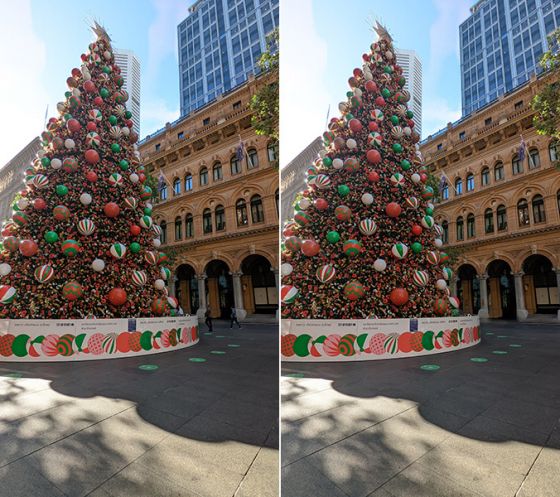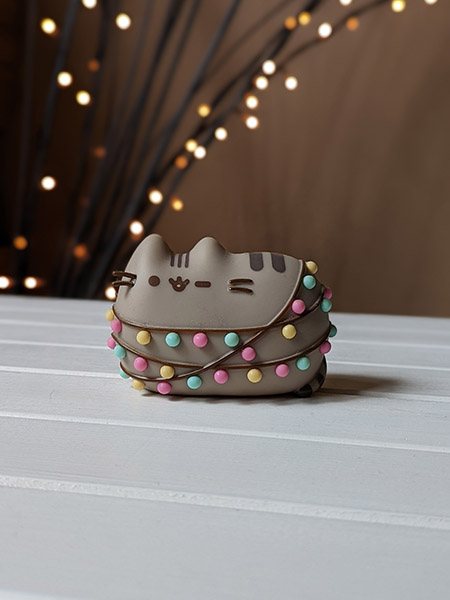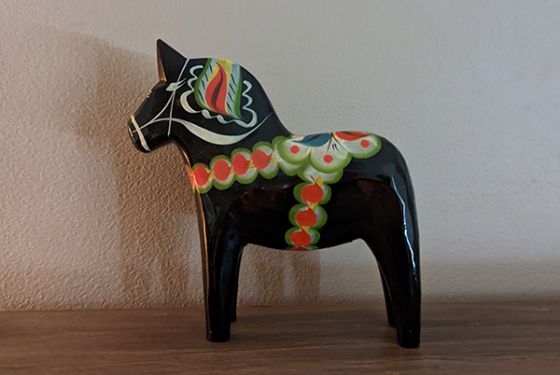Google Pixel phones, the sometimes forgotten competitor to Samsung’s Galaxy S series and Apple’s iPhones, have cemented their place in the smartphone market. Much like Samsung and Apple’s phones, Google’s Pixel devices have a very dedicated following, but for average users, can be the forgotten little brother of the smartphone world.
The 2021 Pixel 6 series might just be the sort of game changer that Google is after. This much-hyped release is the first to feature Google’s own chipset, and sees the manufacturer stepping out on its own and creating a very unique smartphone experience.
However, if you’ve been holding out for the latest Pixel series, or looking for a new smartphone in general, you might be wondering how the latest Pixel 6 holds up in the real world. Read on to find out how the Google Pixel 6 performs day-to-day with this hands-on review.![]()
Google Pixel 6 features and specs
- 6.4-inch FHD+ OLED display with Corning Gorilla Glass Victus
- 4,500 mAh battery with fast wireless charging and Extreme Battery Saver
- IP68 water resistance
- 8GB RAM
- 128GB internal storage
- Google Tensor processor
- Dual rear camera setup (50MP main + 12MP ultra-wide camera)
- 8MP front-facing camera
- Android 12 operating system
- 5G connectivity
- Dual SIM (nano and eSIM)
- $999 AUD RRP
- Available in Stormy Black, Kinda Coral and Sorta Seafoam
| Google Pixel 6 Pros | Google Pixel 6 Cons |
|---|---|
|
|
Jump to:
- Design and functionality
- Performance
- Cameras
- Should I buy the Google Pixel 6?
- Compare Google Pixel 6 phone plans
Design and functionality
![]()
When it comes to design, Google’s Pixels have never been conventional. Rather than following the trends that other brands do, Google, much like Apple, keeps to its own style. However, the Pixel 6 breaks away from Google’s previous device styles, but still seems to be unequivocally a Google Pixel phone.
It’s a good sized phone — big enough for a good viewing/reading experience, but not too big that I found it hard to use one-handed, as someone with smaller hands. The shape is another thing I really liked. It’s a mix between being slightly ‘boxy’ like an iPhone, but with curved sides that make it feel nice and sleek to use.
The glossy finish on the back is broken up at the top by the camera bump which runs along the back in a bar style. What I love the most about what Google has done is turn the camera setup into a design feature. That camera bar leaves Google the space to run two different colours above and below the back of the phone, creating a two-toned back that is totally unique and has a kind of retro vibe to it.
I was given the Stormy Black colourway to test, and while I usually find black/grey phones a bit bland, I really liked the way it looked on the Pixel 6. One downside though is that while the glossy finish looks great, it is very prone to smudging. You won’t get a case included with your Pixel 6, so if you want to keep it from smudging, you’ll need to buy a case separately.
One thing I did like was the way that the camera bump was featured. While it’s a very chunky bump, instead of falling into the trap that other brands do, by trying to relegate the bump to the side of the phone, running the bump in that ‘bar-style’ setup means that you can keep the phone from rocking if you lie it flat. While it won’t be completely flat, it will at least be on an angle and not rock if you use the phone lying on a table. The camera bump also provides a comfortable dent to rest on your finger when holding the phone.
It’s also a super sturdy-feeling phone. It’s solid and feels really durable, especially the screen, but with that comes a much weightier phone at 207g. Putting that into perspective, the iPhone 13 weighs 173g, while the Samsung Galaxy S21 weighs 169g. The weight balance is also a bit off, considering that the camera bump spreads some of the heftiness across the top of the phone.
When it comes to functionality, Google gets most things right. However there were a few minor issues. One noted issue is the fingerprint scan. Like Apple, Google has decided to give users only one option of unlocking (beyond a PIN), and opted for an in-screen fingerprint scanner (in contrast to Apple’s facial unlocking). Many phones do fingerprint + PIN and it’s not a problem, however Google didn’t quite hit the mark with the Pixel 6 unlocking. I did frequently have to make several attempts at unlocking the phone with my fingerprint, which did become frustrating.
However Google has identified this as an issue and has stated that enhanced security is the reason for the slow Pixel 6 unlocking, and an update for this may be rolling out eventually. I’ve had moments where it’s been an issue, and moments when unlocking has been ok, so in the time I’ve been using the Pixel 6, it has been a rather intermittent problem. However it is a pretty big, and disappointing issue to have had straight at launch. Hopefully it will improve down the track.
Another small issue I did have was the placement of the lock and volume buttons. While it’s not a huge phone, as someone with smaller hands, I found this placement was positioned a bit too high on the phone. I also wasn’t a huge fan of having both buttons on the same side of the device, but that’s mostly due to the way I’m used to phone button placement.
Overall, the Pixel 6 does really stand out from the crowd when it comes to the look and the feel of the phone. Design-wise, it is by far one of the nicest-looking phones to be released in 2021 and it feels just as good to use as it does looking at it. Bar a couple of functionality issues, Google has mostly hit the mark when it comes to a device that looks great, and the Pixel 6 is a fairly user-friendly and intuitive phone to use.
Performance
![]()
First up, it’s important to note that the Pixel 6 (along with the Pixel 6 Pro) are the first Google Pixel phones to house Google’s own chipset — the Google Tensor chip. This brings Google’s Pixel phones into the same ballpark as Apple’s iPhones, in that developing its own processor allows it to essentially integrate the chip into the phone even more, and make a much more seamless and customised experience.
So, how does the processor handle performance? I couldn’t really complain about it — ultimately it does feel like a fast and powerful phone and feels very fluid to use. However, there were moments where it would struggle with some pages of text, images and ads, and was just slow to respond to scrolling. It seemed to handle apps like Instagram much more than articles with a variety of media types (text, image, video, ads and embedded social posts). I also felt like some games weren’t as smooth as they could have been, which might have been more to do with game/refresh rate compatibility.
The Pixel 6 is, of course, a 5G compatible phone, and I was able to record speeds of up to 379.70Mbps on the Optus 5G network. The Pixel 6 also includes a gaming feature that pops up when you’re gaming, as many Android phones do. You’re able to adjust settings like turning off notifications, recording, etc. Recording the screen gives you the option to also record audio — both from the game and using the phone’s mic — but when you have game sound on, the mic sound seems very quiet in comparison.
Another of the key features Google has pushed for with the Pixel 6 phones are the translation features. You can type messages in your language and when you turn the translation feature on, they will be translated to the language of choice. At the moment, some of these features are only limited to certain languages. I tested out the translated message feature with an English to Swedish translation and the translations into Swedish were fairly accurate, although slightly robotic at times. However I wasn’t able to get messages in Swedish translated back into English, as it isn’t yet added to this feature. This is perhaps one of the most exciting features to come out in any phone and hopefully it’s something that Google will roll out to more phones, across both Android and iOS, in the future. There are plenty of other translation features Google has added to the Pixel 6 (and 6 Pro) however, until more languages are rolled out, some users might not find much use for these tools just yet.
Battery performance, to me, was a little underwhelming. While it’s meant to have a 4,500mAh battery, I felt like the performance didn’t quite match up to other phones with similar battery capacity that I’ve tested in the past. When using the phone consistently and with intensive activities, it seemed to drain quite quickly and I found the phone ran rather hot in these moments — a phone case might reduce how hot the phone feels in your hand. It drained 6% in 24 minutes while gaming using cellular (including 5G) data, while around 35 minutes of HD video streaming (using WiFi) drained around 5% of the battery. Moderate usage throughout the day, including idle periods, drained around 40% of the battery. Realistically though, the battery drain wasn’t too bad, but you would want to be charging it daily for moderate to heavy users.
While it is a fast-charge compatible phone, you won’t get a fast charger included. They do give you a USB-C to USB-C cable (no adaptor), which isn’t particularly useful if you don’t have any USB-C power adaptors handy. If you’re switching from an older phone, you’ll most likely need to buy a charger or power adaptor. If you’re charging without fast charge, it’s a slow process — taking three hours to charge from 5% battery up to 100%, so you’ll be just over three hours if charging from 0%. This is a task you’ll want to keep reserved for overnight.
As for the performance while using the phone, you’ll be very happy with the Pixel 6. Whether using it to scroll through social media, play games or watch videos, it works how you’d want it. A particular highlight is the viewing experience. Not only is the screen clear and vibrant (although the vibrancy is more natural and less saturated, compared to other devices), but the built-in speakers are fantastic. Many phones tend to just house one speaker, but the Pixel 6 has a very well-hidden top speaker (when compared to the obvious top speaker of iPhones), and speakers at the bottom of the phone. The sound is immersive and rich, although it lacks a little of the depth of iPhones released in the past couple years. If you like watching videos and playing music on your phone without headphones, you’ll be very happy with what the Pixel 6 has for you.
I also found that the adaptive brightness is very intuitive and didn’t seem to struggle detecting a change in the lighting. However, the brightness adjustment was very quick and obvious, rather than the subtle brightness adjustment you might get with other phones, such as iPhones. It wasn’t particularly annoying, but something I felt could be smoother.
When you’re paying around $1,000 for a smartphone, it’s safe to say that you’ll have expectations for how good the performance will be. Luckily, the Pixel 6 does its best to meet them. It’s fast, seamless to use and has a nice intuitive feel that does let the Pixel 6 stand out from the very crowded Android-phone market. My favourite part has been the viewing experience that you’re afforded with the Pixel 6 thanks to the gorgeous screen and speakers. While I felt the battery was a little bit of a let-down, and it seemed to struggle loading some web pages I was reading via social media apps, it still wasn’t enough to detract from the experience in any shape or form. No phone is going to be totally perfect, and considering that the Pixel 6 retails for $999 — cheaper than its Apple and Samsung competitors — the ultra premium experience for a three figure price point, is pretty hard to beat in this space.
Related: iPhone 13 review: another stellar Apple smartphone
Cameras
Google, much like its competitors, will put their cameras forward as one of the big sells of a range. But, rather than boasting more cameras and excessive digital zoom, Google tends to position its cameras as high quality without needing to be flashy about it. Much like Apple’s iPhone cameras, Google doesn’t need ‘more’ to make its cameras stand out from the crowd.
The Pixel 6 includes a dual rear camera setup with 50MP main camera and 12MP ultra-wide camera, and an 8MP front-facing camera. That’s it. Compared to other phones at this price point, the Pixel 6 is competing against a slew of quad-rear camera setups. But does the Pixel 6 need more than the two cameras? Perhaps. But keep in mind that Apple’s iPhone 13 also includes a dual rear camera setup (albeit with wide-angle and ultra wide-angle cameras) and seems to manage just fine.
This is where Google’s Tensor chip is important — when Google has its own chipset in the phone, with its own cameras, it can give users a much better camera performance thanks to the tech behind it. It’s similar to how Apple also has great cameras that produce fantastic results, but with much less impressive sounding cameras on paper than what other brands offer.

So, keeping in mind that less is more, the Pixel 6 cameras are excellent. These cameras stand up to the best-of-the-best in a phone camera performance, and despite having one camera less than the iPhone 13 Pro I’ve tested previously, the quality is on par with the latest Apple devices.
Outdoor photos have a great depth to them, but tend towards showing more shadows than the lighter parts. Not only do the photos have a real depth and dynamic to them, but the colours are very true to life — not overly saturated and not washed out either.
If you want a bit more lightness to the photos, the Pixel 6 has more than just brightness adjusting — you’re able to adjust brightness, contrast and warmth/coolness of your photos before taking them, giving you a lot of photo editing freedom. There’s also a built-in level so you can make sure your photos, especially horizon shots, are straight.
Optical zoom is great, but digital zoom, especially in low-light, leaves much to be desired. However, that’s the same with most phones where you do get a lot of noise on digital zoom and low-light photos. Indoor shots are fine, and it seems to be ultra-sensitive to low light, switching on night mode when the indoors are reasonably dark, such as on an overcast day, but still with a light source present.

One noticeable absence is a macro mode — much like iPhone (which only introduced its first macro lens with the 2021 iPhone 13 Pro). However the Pixel 6 is still capable of catching detail in objects from a reasonably close distance, and zooming into the subject can get you a fairly macro-like photo. Combining the great detail capture with the colour and depth of these cameras make for some gorgeous close-up photos.

Google has also included an extra couple of features to improve your photos — face unblur and magic eraser. Face unblur is as it sounds, where any blurred faces can be unblurred. Magic eraser is perhaps the most exciting feature that Google has rolled out. It lets you erase any photo bombers in your pictures. It’s smart enough to detect obvious photobombers on its own, but you can also manually select them. Testing this feature out was a lot of fun and the results were fantastic — you couldn’t even tell where the photo bomber previously was in the picture.
When it comes to taking portraits, Google is positioning these phones (both the Pixel 6 and 6 Pro) as the most ‘inclusive’ camera, able of picking up the nuances of skin tone, especially darker skin. Testing this out, you do notice that skin tones have a bit more dynamic range to them, and that could be due to the camera’s ability to add in more shadow detail than what you get from other smartphones. I tested out portrait shots between the Pixel 6 and the iPhone 12 Pro, and while Apple’s iPhones can capture great portraits, you can see a little bit more nuance from the Pixel 6’s portraits.

The other great thing about portrait mode is how natural the background blur is. Using the front-facing camera with portrait mode won’t show the background blur until after the image is taken and processed, while you’ll get a bit of blur in the background using the rear camera with portrait mode. It’s clear that Google has put a lot of thought into portrait photography and if selfies and portraits are important to you, you will be able to get some stunning results.

Night mode, called ‘Night Sight’, is on one hand, excellent, but also very hard to use. As with most cameras, you’ll need a steady hand for it to process the photo, but I found it especially tricky to do with the Pixel 6. For every six or so photos I took, I’d only get one photo that was clear enough. There is a guide on-screen to help you keep the camera steady, but it’s still something I struggled with. But the hit with Night Sight is that even if the image looks like it has a lot of noise on screen when taking it, once the photo is processed, a lot of this noise goes and you’re left with some impressive low light photos, even in settings with the most minimal lighting.
Video is also super-impressive with the Pixel 6, thanks to the crisp and clear picture and quality microphone. It picks up a lot of depth to the sound and thanks to image stabilisation works especially well if you’re walking while recording.
The sheer number of photo and video features and editing tools is fairly overwhelming. You have a lot of choice with these tools and Google has thought of a lot of features to really enhance your video and photo taking experience. It’s these small touches, the extra thought and care that Google has put into its cameras and features, that propels the Pixel 6 to one of the best camera setups you can get in a smartphone. While Apple often holds the trophy for software and hardware integration with its cameras, the Pixel 6 is a clear rival to the iPhone for this. If you are an iPhone user looking to make the switch to Android, the Pixel 6 will give you the most Apple-esque experience available in an Android device.
Related: Google Pixel 6 Pro review: a big, bright and bold smartphone
Should I buy the Google Pixel 6?
While Google’s Pixel phones are sometimes forgotten thanks to Samsung’s dominance in the premium Android phone market, these latest Pixel devices from Google should make competitors worried, even Apple.
Google hasn’t really put a foot wrong with the Pixel 6. It’s a great phone with a great performance and very little to fault. The cameras — not just the cameras themselves, but the tech behind it — and the sheer number of features and editing options, position the Pixel 6 as a phone you can have a lot of fun playing around with, even if you’re not really much of a phone photographer.
For the $999 AUD RRP price point for the Pixel 6, you can’t really find a better phone if you’re looking to spend around this price. There is so much that Google got right with the Pixel 6, and bar a frustrating and temperamental fingerprint scanner (which may be fixed in a future software update), it’s not really a phone you can find fault with. It is by no means perfect — no phone ever is — but its clear that Google’s approach to this phone was a holistic one. The freedom that the Tensor chip allowed Google in integrating software and hardware has worked well for the company. Indeed the only other brand that can pull this off so seamlessly is Apple.
And that is where the main competition resides. The Pixel 6 can easily stand up to the latest releases from Apple, and even if you’re used to the iOS experience, the Pixel 6 has a lot of features and customisation that separates it from other Android experiences — and well worth a look into if you’re an existing iPhone user. Not only is the experience a seriously competitive one, but the price sets the Pixel 6 at around $350 less than the iPhone 13.
While it’s not a cheap phone by any means, it isn’t the most expensive of premium phones either. If you’re looking at premium smartphones over $1,000, but hate forking out that much for a phone, you might want to take a look at the Pixel 6, even if you’re a dedicated iPhone user. There’s a lot to love about the Pixel 6 and not really much to complain about, so if you’re looking to find one of the best phones on the market, you’ll want to keep the Pixel 6 in mind.
| Consider the Google Pixel 6 if | Don’t consider the Google Pixel 6 if |
|---|---|
| You’re looking for a premium phone with excellent performance but would prefer not to spend over $1,000. | You don’t have the budget or you’re dedicated to Apple’s iOS experience. |
Compare Google Pixel 6 phone plans
The Google Pixel 6 is available to buy on phone plans from Telstra, Optus and Vodafone. All three telcos give you the option to pay off your device over 12, 24 or 36 months, when bundled with a postpaid phone plan. Since the Pixel 6 is 5G compatible, if you want to be able to use the 5G network on your new phone, Optus and Vodafone offer 5G on all postpaid plans, however if you’re looking to Telstra, you’ll only get 5G access on its Medium, Large and Extra Large plans.
The following table shows a selection of 24-month Google Pixel 6 plans from Canstar Blue’s database, listed in order of standard cost, lowest to highest, then by data allowance, largest to smallest. You can use our mobile phone plan comparison tool to see a wide range of plans from other providers. This table includes products with links to referral partners.
Product used for review/testing was a free sample provided by Google.


Share this article